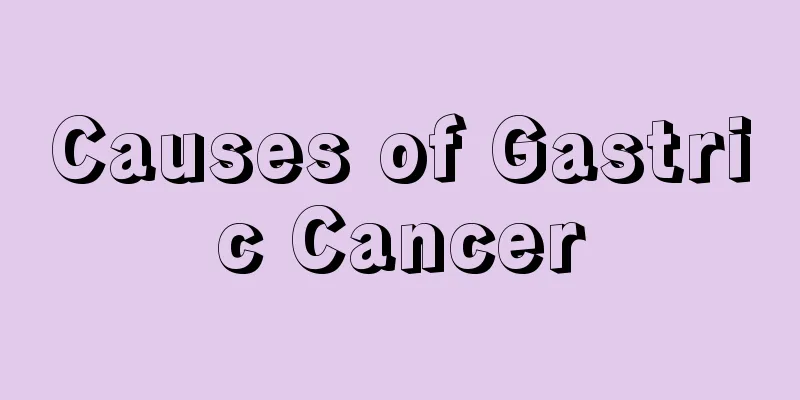Introduction to pathological changes of astrocytoma

|
Astrocytoma is a common glioma, especially common in people between 30 and 40 years old, so its pathological characteristics must be carefully understood. You can use your right eye to observe whether there are nodules or other conditions, or examine under a light microscope. 1. Macroscopic observation: The size of the tumor can vary from a nodule of several centimeters to a huge mass. The boundaries are generally unclear. When necrosis and bleeding occur in the tumor tissue, it seems to be clearly separated from the surrounding tissue, but there is still tumor tissue infiltration outside the boundary. The tumor is grayish white, and its texture varies depending on the amount of glial fibers in the tumor. It may be hard, soft, or jelly-like in appearance, and may form cysts of varying sizes. Due to the growth of the tumor, its space occupation and the swelling of adjacent brain tissue, the original structure of the brain is squeezed and distorted. 2. Under light microscopy: Tumor cells have various morphologies, including polymorphism of tumor cell nuclei, nuclear division images, tumor cell density, degree of vascular endothelial hyperplasia, and tumor tissue necrosis. 3. Astrocytoma has a good prognosis and is divided into subtypes such as fibrous, protoplasmic, obese and mixed cell types according to the morphology of tumor cells. Among them, fibrillary astrocytoma is the most common. The tumor cells are well differentiated, but grow in an invasive manner, and a red-stained fibrillar background can be seen between the tumor cells. Protoplasmic astrocytoma is rare, with small tumor cells, more uniform morphology, and few and short cell processes. Gemistocytic astrocytoma is a type of astrocytoma that is large in size, has rich, translucent cytoplasm, and has eccentric nuclei. Under electron microscopy, intermediate filaments arranged in bundles can be seen in the cytoplasm of tumor cells. The cytoplasm of astrocytomas all express glial fibrillary acidic protein (GFAP), S-100 protein and vimentin. 4. Anaplastic astrocytoma has a poor prognosis. Under light microscopy, it is manifested by increased tumor cell density, obvious nuclear atypia, dark nuclear staining with visible nuclear division images, and hyperplasia of vascular endothelial cells, which are signs of malignant tumors. 5. Glioblastoma is divided into glioblastoma multiforme (GBM) and giant cell glioblastoma. It is a highly malignant astrocytoma that is more common in adults. The tumor often originates in the frontal lobe and temporal lobe, and has a wide infiltration range, often penetrating the corpus callosum to the opposite side, or squeezing surrounding tissues). The tumor is often reddish brown due to hemorrhage and necrosis. Microscopically, the tumor cells are densely packed with obvious atypia, and atypical mononuclear or multinucleated tumor giant cells can be seen with obvious hemorrhage and necrosis, which are the main features that distinguish it from anaplastic astrocytoma. Vascular endothelial cells proliferate significantly and become enlarged or solid cord-like. The tumor develops rapidly and the prognosis is extremely poor, with most patients dying within 2 years. |
<<: How to treat macular degeneration
>>: My eyes hurt and I can't open them, what's going on?
Recommend
Does lucky bamboo absorb formaldehyde?
Some people worry that the formaldehyde content i...
How much does targeted treatment for lung cancer cost per month? How effective is targeted treatment for lung cancer?
Lung cancer is currently a relatively common mali...
Can you eat bitter cantaloupe?
Hami melon is a common fruit that is rich in nutr...
What diseases does dermatology treat?
The appearance of the human body is usually made ...
The difference between bare face cream and liquid foundation
Bare face cream is a skin care product and can be...
Can running enhance immunity?
Nowadays, there are more and more types of diseas...
Not eating pickled food is also one of the ways to prevent colon cancer
If you experience these symptoms: repeated hemorr...
Medical treatment of advanced pancreatic cancer
The medical treatment of pancreatic cancer refers...
How to solve itchy hair
Washing hair is a very common thing. Some people ...
Tongue cancer patients need to follow several dietary principles
It is unfortunate to encounter tongue cancer. Not...
How to make taro balls, red beans and sago
Among many delicious snacks, red bean, taro balls...
How to provide good care for testicular cancer
Although the treatment of testicular cancer is bu...
Early symptoms of esophageal tumor
There are two types of esophageal tumors: benign ...
Only with colorectal cancer examination can patients detect the disease in time
As a common disease, colorectal cancer can cause ...
How to turn yellowed shoe uppers white
Many friends like to wear white shoes, but white ...









